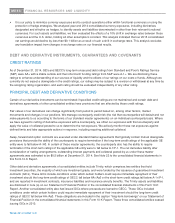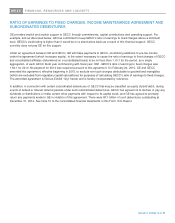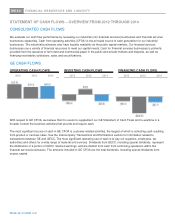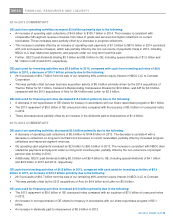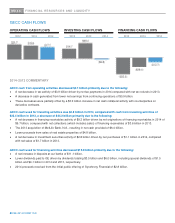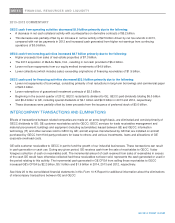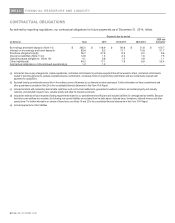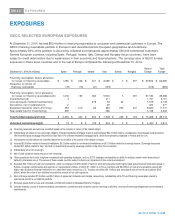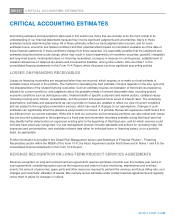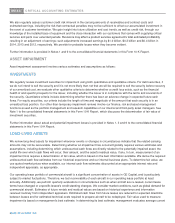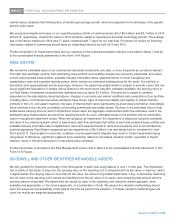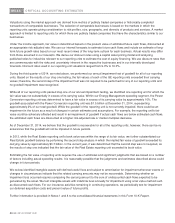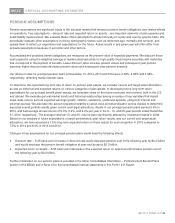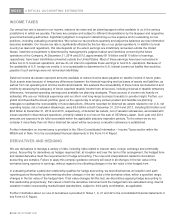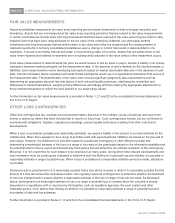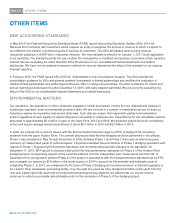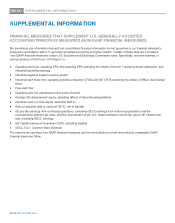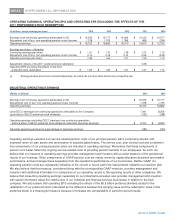GE 2014 Annual Report Download - page 105
Download and view the complete annual report
Please find page 105 of the 2014 GE annual report below. You can navigate through the pages in the report by either clicking on the pages listed below, or by using the keyword search tool below to find specific information within the annual report.
GE 2014 FORM 10-K 85
MD&A CRITICAL ACCOUNTING ESTIMATES
CRITICAL ACCOUNTING ESTIMATES
Accounting estimates and assumptions discussed in this section are those that we consider to be the most critical to an
understanding of our financial statements because they involve significant judgments and uncertainties. Many of these
estimates include determining fair value. All of these estimates reflect our best judgment about current, and for some
estimates future, economic and market conditions and their potential effects based on information available as of the date of
these financial statements. If these conditions change from those expected, it is reasonably possible that the judgments and
estimates described below could change, which may result in future impairments of investment securities, goodwill, intangibles
and long-lived assets, incremental losses on financing receivables, increases in reserves for contingencies, establishment of
valuation allowances on deferred tax assets and increased tax liabilities, among other effects. Also see Note 1 to the
consolidated financial statements in this Form 10-K Report, which discusses our most significant accounting policies.
LOSSES ON FINANCING RECEIVABLES
Losses on financing receivables are recognized when they are incurred, which requires us to make our best estimate of
probable losses inherent in the portfolio. The method for calculating the best estimate of losses depends on the size, type and
risk characteristics of the related financing receivable. Such an estimate requires consideration of historical loss experience,
adjusted for current conditions, and judgments about the probable effects of relevant observable data, including present
economic conditions such as delinquency rates, financial health of specific customers and market sectors, collateral values
(including housing price indices, as applicable), and the present and expected future levels of interest rates. The underlying
assumptions, estimates and assessments we use to provide for losses are updated to reflect our view of current conditions
and are subject to the regulatory examination process, which can result in changes to our assumptions. Changes in such
estimates can significantly affect the allowance and provision for losses. It is possible that we will experience credit losses that
are different from our current estimates. Write-offs in both our consumer and commercial portfolios can also reflect both losses
that are incurred subsequent to the beginning of a fiscal year and information becoming available during that fiscal year that
may identify further deterioration on exposures existing prior to the beginning of that fiscal year, and for which reserves could
not have been previously recognized. Our risk management process includes standards and policies for reviewing major risk
exposures and concentrations, and evaluates relevant data either for individual loans or financing leases, or on a portfolio
basis, as appropriate.
Further information is provided in the Global Risk Management section and Statement of Financial Position – Financing
Receivables section within the MD&A of this Form 10-K, the Asset Impairment section that follows and in Notes 1 and 6 to the
consolidated financial statements in this Form 10-K Report.
REVENUE RECOGNITION ON LONG-TERM PRODUCT SERVICES AGREEMENTS
Revenue recognition on long-term product services agreements requires estimates of profits over the multiple-year terms of
such agreements, considering factors such as the frequency and extent of future monitoring, maintenance and overhaul
events; the amount of personnel, spare parts and other resources required to perform the services; and future billing rate, cost
changes and customers’ utilization of assets. We routinely review estimates under product services agreements and regularly
revise them to adjust for changes in outlook.



